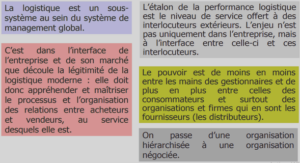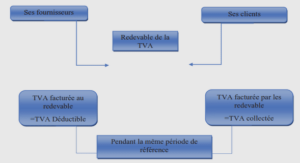The Importance of Solar Energy:
Solar energy is important for humans, animals and plants. Humans and animals use sunlight for synthesis of vitamin D (Dincer, 2000). Solar energy is used as a source of clean energy since it does not harm the ecosystem. Most importantly, solar energy is versatile. It can be used to produce power for many appliances (cooking, cars, watches, calculators etc.) as well as it can produce electricity to run the entire world. It is a source of renewable energy which will become the only source of energy in the future since fossils fuels will come to an end (Höök et Tang, 2013). This is because, we have consumed an improbable amount of fossil fuels since the ancient times. The rate of consuming the fossil fuels is increasing with world’s population. Hence it will run out faster in near future. Fossil fuels also affect the atmosphere. It is responsible for global warming and climate change due to growing levels of certain toxic gases in the environment. Therefore it is necessary to switch to green energy to avoid these fossil-fueled problems.
The energy in light is converted into electrical power in a solar cell (Heeger, 2014). Sunlight contains photons that hit the solar panel and get absorbed by the semiconducting materials of the panel. It helps to knock the electrons to loose from their atoms and flow as electric current (Kim et al., 2013).
Materials Used for Fabricating Solar Cells:
Solar cells can be made from various materials- inorganic or organic (Noh et al., 2013). Direct band gap materials such as GaAs, InP, CdTe give more energy conversion efficiency than indirect ones e.g. Ge, Si (Shah et al., 1999). Metals like Ag, Al, Au, Cu, Zn can be used to fabricate solar cells and insulators like glass is also a very good substrate to design a solar cell (Kluth et al., 1999). For this thesis research, we will fabricate solar cells using silicon (Si) wafer since in the crystalline form, Si has lot of special chemical properties (Wenham et Green, 1996). Moreover, Si is not toxic and is found in nature in abundance
Sources of Losses in Solar Cells:
here are four important loss mechanisms (Kaushika et Rai, 2007) that need to be analyzed in solar cells namely a) photon absorption, b) exciton generation, c) exciton separation into free carriers, and d) carrier collection by electrodes.
Photon absorption is the ability of a solar cell to capture and preserve as many photons reaching its surface. Photons in the sunlight hit the solar cell and are absorbed by the semiconducting solar cell material. However, material surface defects, angle of incidence and difference in index of refraction make this task a tough one to achieve (Trupke, Green et Würfel, 2002a).
There are two main sources of loss in photon absorption: i) reflection, for which certain portion of the incident light manages to enter the active region of the device and the rest is reflected (Zhao et al., 1995), and ii) transmission, which strongly depends on the material and active region thickness (Trupke, Green et Würfel, 2002b). An active region too thin, in the order of 100 nm or less will not take full advantage of the photon collection, and one too thick, on the order of 1 um or more presents difficulties for fabrication with desired precision. Thickness in the active region affect directly operation parameters such as short circuit current density, filling factor and efficiency .
The second loss mechanism is exciton formation inside the cell. A clear confirmation of a photon being absorbed is the creation of an exciton, which is an electron-hole pair bound by Coulomb potential. If this binding energy is smaller than the device’s thermal energy at room temperature, the exciton will break and the carriers will relax to the band edges as free charge carriers that can be further extracted. If the binding energy is strong, a bound exciton state will be formed by the carriers, as is the case for organic semiconductors (Knupfer, 2003), and the carriers will be relaxed due to carrier phonon coupling. As a result, the energy will be dissipated by heat transfer. This loss mechanism accounts for 30-40% of the incident solar radiation (Garnett et al., 2011). Additionally, carrier relaxation losses are related to the charge separation processes that are due to the potential gradient in the active region. In the end, it facilitates the carrier collection by the contact interfaces.
Efficiency Enhancement Techniques of Solar cells using Vertically Aligned Silicon Nanowires:
A significant amount of research has gone into understanding the unique electrical, mechanical and thermal properties of nanowires (NWs) (Thelander et al., 2006). The Si based NWs have become popular since adequate industrial infrastructure can help to fabricate SiNWs at low manufacturing costs. Typically diameters of nanowires tune on the order of nanometres. The motivation for research on NWs arises from the fact that electrons in nanowires are restricted in the lateral direction occupying energy levels different from the energy levels found in bulk materials. For this reason, SiNWs show luminescence. On the other hand, indirect band gap SiNWs can barely be used in functional optoelectronics. These two qualities together and the formation of SiNWs which are electrically and optically porous can steer new generation of Si based nanoscale devices. The other advantage of using NWs is that these tiny architectures can be assembled without complex and costly fabrication facilities making device fabrication a cheap endeavor. Applications of NWs are investigated in different fields such as field-effect transistors (FETs) (Goldberger et al., 2006), flexible large area electronics, thermoelectric, photovoltaics (Garnett et Yang, 2008), battery electrodes (Peng et al., 2008), and electronic biosensors (Zheng et al., 2005).
INTRODUCTION |






